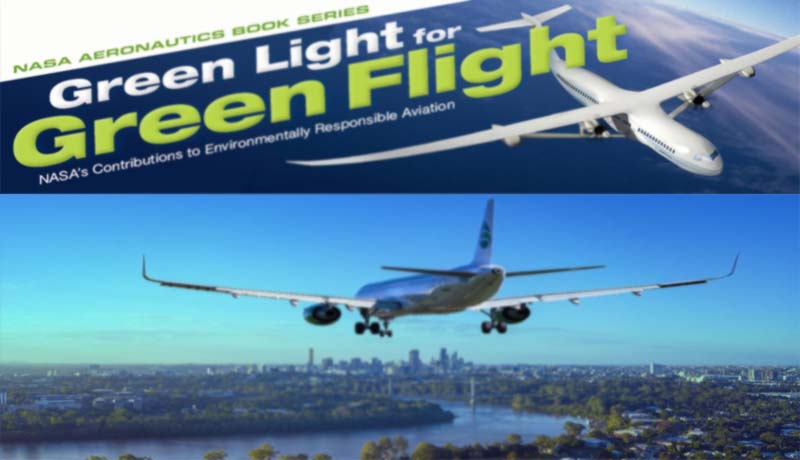In the rapidly evolving landscape of aviation, the term "green flight" has taken center stage. With growing concerns about environmental sustainability, the aviation industry is under immense pressure to adopt greener practices. This article explores the concept of green flight, its significance, benefits, and the innovative technologies driving its adoption.
Understanding Green Flight
Green flight refers to the efforts and initiatives taken to minimize the environmental impact of air travel. The aviation industry is a major contributor to carbon emissions and climate change. Green flight aims to mitigate these effects through various strategies, including improved fuel efficiency, alternative fuels, and advanced aerodynamics.
The Significance of Green Flight
The urgency of adopting green flight practices cannot be overstated. As air travel continues to grow, so does its carbon footprint. By embracing environmentally friendly practices, the aviation industry can play a pivotal role in reducing greenhouse gas emissions. This not only aligns with global environmental goals but also enhances the industry's reputation and sustainability.
Benefits of Green Flight
Reduced Emissions: Green flight technologies, such as more fuel-efficient engines and optimized flight routes, can significantly reduce carbon emissions, making air travel more environmentally friendly.
Lower Operating Costs: Many green flight initiatives, such as lightweight materials and aerodynamic improvements, not only contribute to sustainability but also lead to cost savings for airlines.
Enhanced Reputation: Airlines that prioritize green flight demonstrate their commitment to sustainability, attracting environmentally conscious passengers and positive media attention.
Regulatory Compliance: With tightening environmental regulations, adopting green flight practices ensures that airlines remain compliant with future emission standards.
Innovative Technologies Driving Green Flight
Electric Propulsion: Electric and hybrid-electric propulsion systems are being explored to replace traditional jet engines, reducing emissions and noise levels.
Alternative Fuels: Biofuels derived from renewable sources, such as algae or plant waste, are being developed to replace conventional aviation fuels.
Advanced Materials: Lightweight composite materials are being used to construct aircraft, reducing weight and improving fuel efficiency.
Streamlined Designs: Improved aerodynamics, wing designs, and airframe modifications are enhancing the overall efficiency of aircraft.
Challenges and Future Outlook
While the concept of green flight holds immense promise, it's not without challenges. The development and implementation of new technologies can be costly and time-consuming. Additionally, the aviation industry's complex infrastructure requires careful consideration when transitioning to greener practices. However, with collaborative efforts from governments, airlines, and technology providers, these challenges can be overcome.
In the coming years, the aviation industry is expected to witness a substantial transformation toward green flight. As technology advances and awareness grows, airlines will continue to prioritize sustainability, leading to a more eco-friendly future for air travel.
Implementing Green Flight: Steps to a Sustainable Future
The transition to green flight involves a series of strategic steps that collectively lead to a more sustainable aviation industry. Airlines, manufacturers, and regulatory bodies play crucial roles in driving this transformation forward.
1. Investing in Research and Development
To bring about meaningful change, airlines and aviation companies must invest in research and development of green technologies. Collaborative efforts between research institutions, engineers, and scientists are essential to creating innovative solutions that address environmental concerns without compromising safety and efficiency.
2. Promoting Regulatory Support
Government agencies and international aviation bodies should collaborate to create and enforce regulations that incentivize green flight practices. Tax incentives, grants, and emissions trading programs can motivate airlines to adopt sustainable technologies and practices.
3. Advancing Alternative Fuels
The aviation industry is actively exploring alternative fuels to replace traditional jet fuels. Research into the production, scalability, and cost-effectiveness of biofuels and synthetic fuels is essential to reduce the carbon footprint of air travel.
4. Collaboration with Technology Providers
Airlines should collaborate with technology providers to integrate cutting-edge solutions into their operations. Electric propulsion, advanced avionics systems, and efficient aerodynamics are areas where technology companies can contribute to greener flight.
5. Sustainable Infrastructure Development
Airports play a pivotal role in the green flight movement. Developing sustainable airport infrastructure, including renewable energy sources, energy-efficient terminals, and optimized ground operations, can contribute to overall emissions reduction.
6. Raising Passenger Awareness
Passenger education and awareness are crucial for the success of green flight initiatives. Airlines can engage passengers through in-flight announcements, digital platforms, and informative materials to highlight the environmental benefits of choosing green flights.
The Path Forward: An Eco-Friendly Horizon
As we look ahead, the path toward green flight presents both challenges and unprecedented opportunities. The aviation industry's commitment to sustainable practices will not only reshape the way we travel but also set new standards for corporate responsibility and environmental stewardship.
In a world where climate change is a pressing concern, the adoption of green flight practices isn't just a choice—it's an imperative. The collaboration between airlines, manufacturers, governments, and passengers is essential to turn this vision into a reality.
With ongoing advancements in technology, continued investment in research, and a collective commitment to change, the aviation industry can navigate towards an eco-friendly horizon. The journey to sustainable air travel is underway, and the "green light for green flight" is not only an invitation to embark on this journey but a pledge to ensure a cleaner and more sustainable future for generations to come.
Conclusion
In conclusion, "green light for green flight" isn't just a catchy phrase; it's a clarion call for the aviation industry to embrace sustainability wholeheartedly. The pursuit of green flight practices isn't limited to a single sector—it requires collaborative efforts from all stakeholders involved. As airlines, manufacturers, governments, and passengers come together to prioritize the environment, we can expect a future where air travel isn't just a mode of transportation but a symbol of responsible innovation. By prioritizing research, embracing technology, and fostering a global commitment, the aviation industry can soar towards a greener, more promising future. The runway to sustainability is open, and the green light is guiding us towards a destination of positive change.





0 Comments
We Love and Respect you a lot so please do not enter any spam link in the comment box.